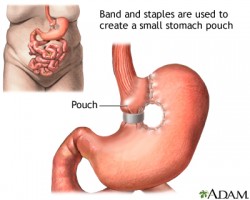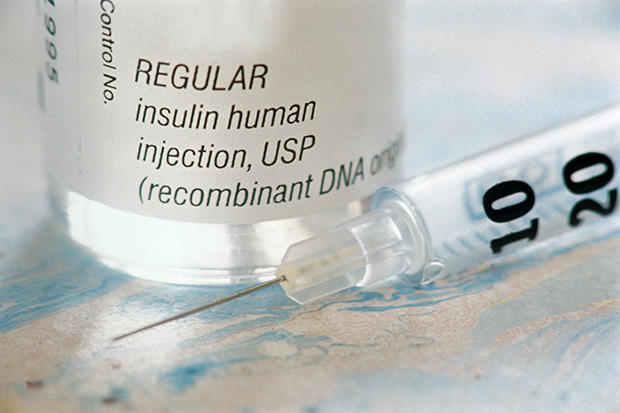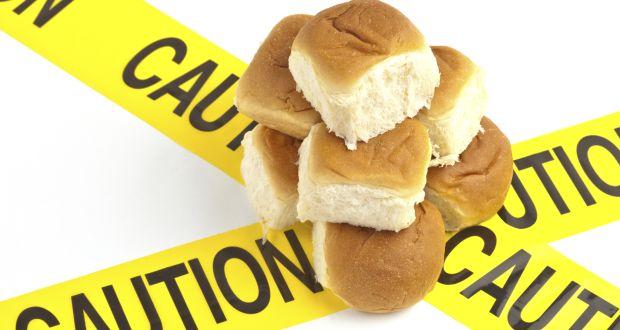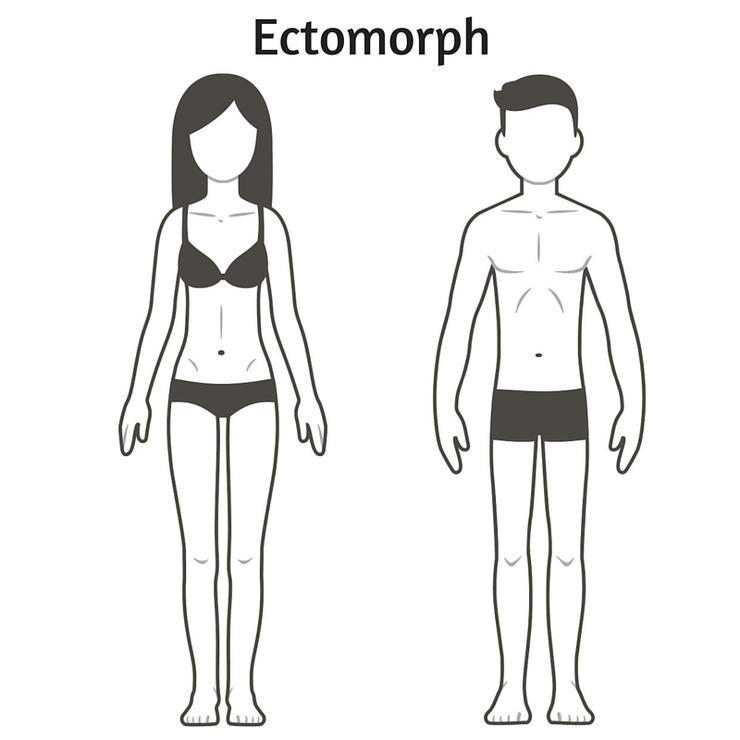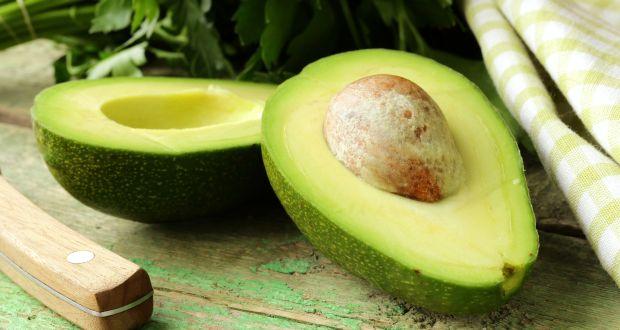How to Lose a Lot of Weight over the Summer
The summers are full of fun. Parties, swimming, beaches, and the like all make summer one of the best times of the entire year! However, there's also plenty of opportunities to eat food that, while tasty, is not the best if you are trying to lose weight, such as processed meats for barbecuing, ice cream, and sugary cold drinks. Weight loss can be reduced to a simple formula: Eat fewer calories than you burn. To do lose a lot of weight in the summer, you'll need to watch what you eat and engage in regular exercise.[1]
Steps
Method 1 Preparing for Weight Loss
-
1
Know what a healthy weight is for your body type. To determine what your healthy goal weight should be, use the body mass index (BMI), which is an indicator of body fatness. BMI is a person's weight in kilograms (kg) divided by the square of the person's height in meters (m). Identify the weight you would like to be in kilograms and then divide that by your height in metres to see whether it is healthy. Increase or decrease that goal weight so that it fits within the BMI range considered healthy:[2]
- A BMI below 18.5 is considered underweight.
- A BMI of 18.5-24.9 is a normal or healthy weight.
- A BMI of 25-29.9 is considered overweight, while a BMI greater than 30 is considered obese.
- Along with finding a healthy weight, also realize what is realistic. If you are 100 lb away from your healthy body weight with only a month before summer, consider setting a smaller, more attainable goal.
-
2
Figure out how many calories you need to eat and burn. The more calories you cut back, the more weight you will lose; however, it is important that you do not eat less than your Basal Metabolic Rate, the amount of calories your body needs to function effectively when at rest. This number can be calculated using an online BMR calculator.
- In general, don't aim to lose more than one to two pounds per week. A loss of one to two pound per week is a healthy rate at which to lose weight; any more than this could be too drastic a change and may signify that your body is not getting what it needs. To do this, try to eat 250 fewer calories per day and burn an extra 250 calories a day. This ratio will create enough of a calories deficit that you should lose one pound per week.[3]
-
3
Understand and track calorie intake. During the summertime, you are surrounded by opportunities to eat, whether it’s at a barbecue, pool party, ice cream party, or summer luau. However, if you want to lose weight over the summer, it's important that you cut back on the number of calories you eat. As a general rule, weight loss occurs when you burn more calories than you consume.
- To help figure out how many calories you normally eat each day, track your food for a day by writing down the number of calories on everything you eat and drink. Calories are listed on the back of food labels. For foods that do not have labels, you can find information about the caloric value of certain foods online through the USDA Food Database.[4]
- Pay attention to the number of servings you eat and multiply this by the number of calories per serving. For example, if you at 30 chips and a serving size is 15 chips, you need to multiply the number of calories by two since you ate two servings.
- Once you have figured out how many calories you normally eat, cut down this number by 500-1000 calories per day in order to lose weight.
-
4
Plan to keep a log. In this log, record what you eat and the type and duration of exercise you're doing every day. This is a simple yet very powerful tool to keep yourself accountable. The log will help you track your progress and see whether you are keeping to your healthy diet and exercise regimen.[5][6]
- This is a wonderful way to hold yourself accountable and stay on track. There are many apps for smart phones that have capabilities to track food intake, energy expenditure, water intake and more!
- Often, we tend to overlook the snacking we do between meals and instead think our diet is not working. Studies have shown that most people underestimate how much they eat by 25 percent.[7]
- In addition, many of us think we get more exercise and burn more calories than we do.[8] Use the log to identify how many calories your exercise—whether it be a run on the treadmill or a spin on the bike—is burning. If you use cardio machines at a gym, the number of calories is usually digitally calculated and displayed. Make sure to put in your particulars, such as weight and age, to achieve an accurate count. There are also online charts that can help tell you how many calories a half hour or an hour of a given exercise burns.
- You might also discover useful information about your daily habits and a reality check about how many calories you actually consume and burn off through exercise. Once you know your habits and patterns better, you can begin to address problem behaviors that are hindering your progress.
-
5
Get support. Find a partner—whether that be a spouse, friend, or family member—who wants to join you during outdoor activities, hit the gym with you, or join your healthy eating plan. Having social support will make it easier to lose weight because the other person will also keep you accountable and be a sounding board for any obstacles and struggles you face along the way.
- If you cannot find a friend or partner to help you with your weight loss journey, utilizing the services of a personal trainer or registered dietitian will keep you accountable and help you stay active and eat healthy. A trainer can also be a huge support system. Think outside of the box for your support system!
-
6
Consult a physician. Always consult your physician before beginning any type of weight loss and/or exercise program. You should also consult your physician throughout your weight loss program and keep him updated of any changes or symptoms you may be experiencing, such as constipation thanks to your new diet plan or lethargy due to not getting enough food.
- In addition, you should also talk to your doctor if you are eating well, tracking your calories and watching what you eat, exercising, and are still not losing weight. This could be indicative of a more serious underlying medical condition, such as a thyroid problem.
Method 2 Making Dietary Changes
-
1
Limit alcohol consumption. Research has shown that alcohol can increase appetite and how much food you consume. Moreover, most types of alcohol, including beer and liquor, have been associated with belly fat specifically. (Wine appears to be an exception.) However, you don't need to cut out all alcohol, but instead limit yourself to one to two glasses of wine or clear liquor a day. [9][10][11]
- Remember that when the liver is focused on processing alcohol, it cannot be focused on fat loss. To keep the liver focused on fat loss, consider eliminating alcohol altogether and taking a liver cleansing supplement to keep it in tip-top shape.
- Stick to wine and liquor. A 5-ounce glass of wine or 1-ounce shot of liquor has about 100 calories, while a standard 12-ounce beer has 150 calories.
- Avoid mixed drinks and summer favorites like margaritas and daiquiris, which are usually loaded up with sugar.
- One 2010 study showed that women who consumed a light to moderate amount of alcohol actually gained less weight and had a reduced risk of becoming overweight than non-drinkers across a 13-year period.[12]
-
2
Avoid fast food and most processed foods. Most of these are empty calorie foods. "Empty calorie" foods are those which have calories (from sugar and/or solid fats) but little to no nutritional value. Further, many processed and refined foods, like white flour, white bread, and white rice, also lack B vitamins and other nutrients. Many also often contain partially hydrogenated fats (trans fats) or refined sugars (think high fructose corn syrup), which are extremely unhealthy.[13][14]
- Foods and beverages that provide the most number of empty calories for Americans include cakes, cookies, chips, pastries and donuts, sodas, energy drinks, fruit drinks, cheese, pizza, ice cream, bacon, hot dogs and sausages. You can see how this is an especially big problem in the summer!
- Sometimes you can find better or alternate versions of these foods. For example, you can purchase low-fat hot dogs and low-fat cheese at grocery stores. You can also have sugar-free drinks. In other foods, like candy and regular soda, all the calories are basically empty.[15]
- Avoid saturated fats, like those in animal products, such as red meat, butter, and lard.
-
3
Add good fats to your diet. Replace those bad fats with good fats, though you'll always need to keep even the good fats in moderation. Monounsaturated fats have been clinically proven to help you burn fat, especially in your midsection. So, add foods like avocados, kalamata olives, olive oil, almonds, walnuts, and flaxseed to your diet to help facilitate weight loss.[16][17] #*Fats are our friend! Healthy fats can provide satiety, eliminate cravings, improve joint pain, promote hormone production and more!
- Try to make healthy substitutions wherever you can, such as olive oil instead of butter in your cooking or a small handful of 10 to 12 almonds instead of a pre-packaged cookie for a snack.
-
4
Opt for lean meats. Meats are a popular food found at summer barbecues and parties. In order to lose weight over the summer, it is important to choose meats that are lower in fat, which most red and processed meats, like hamburgers, hot dogs, sausages, and steaks, are not. Leaner meat options include turkey, chicken, center cut pork loin, or extra lean ham steaks.[18]
- Remove any skin or visible fat before cooking and eating meat. You can also purchase some meat, such as chicken or turkey breasts, skinless.
- You don't need to cut out red meat entirely but instead make better choices. For instance, when buying ground beef or turkey, choose meats that are 93% lean or higher (in other words, 7% fat or less). If you are grilling steaks, choose a leaner cut of steak, such as a top sirloin steak or round steak.
-
5
Incorporate more fish into your diet. Try and eat fish at least twice times per week. Fish, particularly salmon, mackerel, and tuna, is high in omega-3 fatty acids, which our bodies cannot make and get from our diet.[19] These omega-3 fatty acids may also help you lose weight.[20]
- Fish is also an excellent source of protein and a good choice if you're looking to phase out fatty meats.
-
6
Choose low-fat dairy options. Opting for lower fat dairy options will help reduce the amount of saturated fat you consume, thereby helping you lose weight (since saturated fats contribute to weight gain).[21]
- Buy milk and cottage cheese with 1% fat or less. Choose low-fat or fat-free yogurts.
- When buying cheese, pick hard cheeses that are lower in fat, such as cheddar or parmesan Avoid the soft and gooey cheeses.
-
7
Eat more whole grains. Whole grains are loaded with fiber and minerals that are essential for a healthy body weight. Not to mention, whole grains fill you up and keep you full.
- Eat 100% whole wheat bread instead of white or wheat bread, brown rice instead of white rice, whole wheat pasta instead of white pasta.
- Eat more oats such as steel cut oats, old-fashioned oats, or quick oats.
-
8
Eat more fruits and vegetables. Fruits and vegetables are an essential part of a nutritious diet; they're low in calories and packed full of important vitamins, nutrients, and minerals. Adding more fruits and vegetables will help you lose weight and also make you healthier in the long run in part because they are high in fiber that can help you feel full longer and prevent you from overeating. In addition, Many fruits and vegetables are in season during the summer making it easier to add them to your diet since there are more available and they tend to be less expensive.[22][23]
- Children aged nine and older and adults should consume 1.5 to 2 cups of fruit and 2.5 to 3 cups of vegetables every day. A good way to achieve these recommended amounts is to make sure that at each meal, your plate is 2/3 loaded up with fresh produce.
- Try color blocking. Make sure your meals have lots of colors; the best way to do this is by adding lots of fresh produce, from eggplant to beets to kale to yellow peppers. This color blocking usually helps you eat more produce and makes the meal look appetizing and appealing at the same time![24]
- One way to add more fruits and veggies to your diet, cut calories, and still enjoy the foods you love is to add or "hide" veggies to dishes. Researchers have found that adding pureed vegetables to dishes (e.g., cauliflower to mac and cheese) helped people eat a few hundred calories less of the dishes.[25] Veggies add but bulk to a dish but not really a ton of extra calories.
-
9
Eat foods with a high water content. Studies have shown that people who eat foods with high water content have lower body mass indexes. The water in these foods helps keep you full for longer so you eat less overall. Unsurprisingly, foods with the highest water content are fruits and vegetables, thus hitting two birds with one stone![26][27]
- Watermelon and strawberries have about 92 percent water per volume. Other fruits with high water content include grapefruit, cantaloupe, and peaches. Remember, though, that many fruits are high in sugar, so try to limit how much fruit you eat daily. [28]
- For vegetables, cucumber and lettuce have the highest water content at 96 percent. Zucchini, radish and celery have a water content of 95 percent.
-
10
Stay hydrated. Staying hydrated over the summer is extremely important. With higher temperatures and more physical activity, your body needs more water due to excess sweating. Drinking water has been shown to increase weight loss in women who are also dieting to lose weight.[29] Although the exact mechanisms as to how water aides in weight loss are unknown, it may be that water consumption facilitates weight loss because it keeps you full for longer and gives your body energy and provides your water with enough water to efficiently burn fat. Drink the recommended 13 cups per day for men and nine cups per day for women to help you lose more weight over the summer.[30] If you have a hard time drinking enough water, you can also try to stay hydrated and nourished with these fun, summer ideas:
- Make your own smoothies. The perfect way to make a single serving smoothie is to fill the container halfway with leafy greens (such as spinach or kale), fill the other half with fruits (banana, berries, mango, etc), add some type of nutritional boost (such as flaxseed, chia seeds, or almonds), pour 8 fluid ounces of liquid on top (such as water, 1% milk, almond milk, or soy milk), and blend together until smooth.
- Make homemade popsicles. Homemade popsicles are an excellent way to stay hydrated as well as stay cool during the summer heat. They can be made just like a smoothie and then poured into a popsicle mold and frozen overnight. Another healthy and refreshing way to make popsicles is to fill up the mold halfway with water and the other half with 100% fruit juice (not fruit cocktail or any other juice "blend". These have additional sugars that will not aid in weight loss). Freeze overnight.
- Make infused water. Infused waters are an excellent way to add flavor to your water and make it more palatable if you're not a fan of drinking plain water. Infused waters are made by soaking freshly chopped fruits and vegetables in water for a minimum of 30 minutes to add flavor to the water. Some popular combinations for infused water include raspberry-lemon, strawberry-kiwi, and cucumber-lime.
Method 3 Changing Your Eating Habits
-
1
Eat slowly. Most people take eat too fast and take in too much food and too many calories before they actually realize they're full. Your brain takes around 20 minutes to register feelings of fullness, suggesting that you need to slow down so that your brain can properly communicate that you're full. And remember, feeling full usually means eating less or stopping eating.[31]
- Mindful eating is a tactic that many use to stay at a healthy weight. You simply eat when truly hungry and stop when full. The brain will let you know when you're full as long as you give it time to do so. Also, differentiate between true hunger and boredom/habit/emotional hunger.
- If you don't feel full immediately after a meal, wait. The chemicals your brain releases when you eat or drink take time to rise and to communicate that sense of fullness. As the chemicals increase, your hunger dissipates; this is why you should pause for a little bit after eating and before having a second helping.
-
2
Create an environment conducive to eating. Use utensils and sit at a table when eating. Eating with your hands will mean that you take in more food in one scoop. Don't turn on a TV or anything that may distract you. Typically, people who eat in front of a television tend to eat more because they're not focused on what they're doing and how much they're eating.
- Studies also show that people who eat with larger utensils eat less than those who eat with smaller utensils. Another good idea is to put your food on a smaller plate so it looks more full and tricks your mind.[32]
-
3
Stop eating when you feel full. When you feel comfortably satiated after eating, stop and put your utensils and napkin on the plate to signal that you're finished. This is also a signal to yourself that you're done with your meal as well as to those around you.
- Remember, you don't have to eat all of your meal once you feel satisfied. Satisfied and satiated is different than feeling stuffed. Eat until you are 80% full. No one should feel stuffed and sick after eating.[33]
-
4
Drink water while eating. In many cases, we mistake thirst for hunger which means we eat when it's not necessary. By keeping yourself well hydrated you'll feel hungry less as well as getting a clearer complexion and shinier hair. Sip water as you eat as well to ensure proper digestion and also to help with fullness.
- If you're not sure what you're feeling is actually hunger, try drinking a big glass of water and then wait a few minutes. If you don't feel hungry anymore, it's because your body was actually in need of water, not food.[34]
-
5
Manage eating out. Eating in restaurants or at other people's homes during the summer season can be a real challenge. You want to eat, but you also don't want to eat the wrong things and risk backtracking on your progress.[35]
- To avoid overeating when out, eat a small and healthy snack at home beforehand. Try some carrots and hummus or an apple. A small snack before hand will curb your hunger and keep your head clear while you make healthy and informed choices at a party, BBQ, or restaurant.
- At the beginning of the meal, ask for a doggie bag, and put what you aren't going to eat in the bag. If you're at a friends, only eat until you're full and avoid filling up your plate to the brim; your eyes are most definitely bigger than your stomach!
- Be wary of fatty foods masked as healthy. Many salads with dressings can be very fatty and full of calories. Your seemingly "healthy choice" of a salad can pack as many calories as a burger if it’s swimming in a fatty dressing. Be also wary of other high-calorie additions like bacon bits and cheese.[36]
Method 4 Getting Regular Exercise
-
1
Make physical activity part of your everyday routine. While changing your diet and cutting calories typically has a stronger effect on weight loss than physical activity, daily physical activity, including routine exercise, is more significant in maintaining your weight loss and avoiding weight regain. Aim for at least 30 minutes of overall physical activity per day.[37] Log all of this activity, even strength training.
- Physical activity is not only important for weight loss but has also been shown to help prevent a number of diseases and medical conditions, such as cardiovascular disease, high blood pressure, and type II diabetes. It can also reduce symptoms of depression or anxiety, which will make your summertime more enjoyable if you suffer from these things.[38]
-
2
Get aerobic activity. Spend 150 minutes each week doing moderate-intensity aerobic activity or 75 minutes per week of vigorous-intensity aerobic activity. Note that this is just a guide; the exact amount of physical activity required to lose and maintain weight is unclear and varies from person to person. If you're not seeing results (and are sticking to your healthy diet plan), then consider increasing your aerobic activity until you see a weekly weight loss of a pound or two per week.[39]
- Moderate-intensity exercise means that you can still carry on a conversation while performing the activity even though your heart rate is elevated and your breathing becomes more intense. Examples include brisk walking (15-minute mile), light yard or outside work (raking leaves, shoveling snow, mowing the lawn), biking at an easy pace, etc.
- Vigorous-intensity exercise means that you are breathing too heavily to maintain a conversation. Examples include jogging or running, swimming laps, jumping rope, biking at a faster pace or on an incline, competitive sports, such as football, basketball or soccer, among other activities.
-
3
Do strength training. Strength training is also important for weight loss and preventing loss of muscle and bone mass.[40] Strength training can be done in your day-to-day life, such as lifting heavy boxes and groceries or doing heavy gardening or other yard work. Pushups, sit-ups, and plank poses are also great exercises which require no special equipment or environment and instead use your own body weight as resistance. You can also use weight machines or lift free weights at a gym to build strength. Make sure to focus on all muscle groups when doing strength training.
- If you're interested in strength training but aren't sure how to build muscle in all areas of your body, consider getting a personal trainer, who can show you the different types of exercises needed to strengthen all muscle groups. While this is an added cost, a trainer will also ensure that you are doing exercises correctly and in proper form, thereby reducing the risk of injuring yourself.
-
4
Consider joining a gym. Joining a gym is an excellent way to stay active during the summertime. Some gyms even have specials for students as a way to encourage young people to keep active; in addition, there may also be other summertime specials or discounts to encourage people, who are often busy and out of town in the summer, to get back into the gym. Try to find a gym in your neighborhood; if it's too far away you likely won't be motivated to go as frequently.[41]
- Gyms usually also have personal trainers available for consultation and hire. Some gyms also have exercise classes that can help you diversify your work out and work different muscle groups. Some people also find exercise classes to be more motivating than exercising on their own. Another benefit of a gym is that you may make new friends![42]
- If personal trainers and gyms are not your thing, consider group fitness such as dance, aerobics, and more.
-
5
Do at-home workouts. You can also get more exercise without becoming a gym rat by doing exercise right into the comfort of your own home. Thanks to the internet, there are tons of workout routines and videos available online; you can do everything from a 10-minute cardio work out, to a hips, thighs and legs workout to a one-hour yoga class right in your own home.[43]
- Exercising at home is ideal for people who can't afford to join a gym or sports club or who are concerned about exercising in public. At-home routines enable you to get a fun, studio-quality workout in the comfort and privacy of your own home.
- Remember, however, that if you're following a video to only do what you're capable of and to try to maintain proper form. If you injure yourself, there is no one there to help, so be cautious about what activities or videos you follow online. A good idea is to watch the video or read the full exercise plan before undertaking it to ensure that this is something you feel comfortable and safe doing.
-
6
Get outside. Working out in a gym isn’t the only way to stay active and participate in physical activity during the summertime. With the nice weather that often accompanies summer, there are many opportunities to go outside and be active. In so doing, you can both take advantage of the amazing summer weather and also work to lose weight! Here are some fun outdoor activities you can partake in during the summer:[44]
- Remember to MOVE. Keep your body moving. If you have a sedentary job, make it a priority to take the stairs, park further away and walk around on breaks.
- Play a sport. Join a summer sports league or find friends to play a friendly game of soccer, volleyball, football, baseball, and more.
- Go for a brisk walk, jog, or run. Find a trail, track, or other scenic area in your neighborhood to go for a walk or run and build up your cardiovascular strength.
- Go for a bike ride. Find a bike path, park or bike-friendly road to go for a ride and work your legs in the fresh air.
-
Follow These Tips To Reach Your Fitness Goals!
Any discussion of how to make fitness work for people needs to take i
-
Are Your Prescription Pills Making You Gain Weight?
These days, it seems almost any problem can be solved with a pill.&nbs
-
This Woman Passed Up Bariatric Surgery—And Then Dropped 6 Dress Sizes
Cheryl Swain was 46 and weighed 275 pounds when her doctor recommended
-
Burn That Extra Fat - And Lose Weight Now!
The way of modern life, fast foods and unhealthy habits eventually sh
-
Quick Weight Loss Tips For Beginners
These quick weight loss tips are for beginners, those of you that hav
-
How To Stop Binge Eating At Night
So imagine this, you just spent all day following a solid diet
- DON'T MISS
- 9 foods that melt away flab!
- Free Weight loss book and course
- How to Lose Weight
- Weight Loss Tip #131 – Never go shopping on an empty stomach
- Losing Weight Slowly? Try These Easy Tips!
- Weight Loss Tip #3 – Boost your metabolism to lose weight
- Weight Loss Tip #25 – Eat flaxseeds to lose weight
- Simple Steps to Weight Loss Success - These Work Every Time
- Coenzyme Q10 Ensuring Weight Loss
- 13 Thoughts You've Had Before a 7 A.M. Workout
